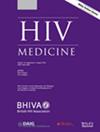Trend of HIV/AIDS disease burden in China from 1990 to 2021: An age-period-cohort model analysis
Abstract
Background
Understanding the burden of HIV/AIDS in China over the last few decades is vital for creating effective control strategies.
Methods
This study systematically retrieved data from the Global Burden of Disease (GBD) study 2021, including information related to HIV/AIDS in China. It assessed the burden of HIV/AIDS using specific indicators and methods, such as incidence, mortality and disability-adjusted life-years (DALYs). Joinpoint regression models were used to analyse the trends in disease burden, and age-period-cohort models were used to evaluate the effects of age, period and cohort.
Results
From 1990 to 2021, the incidence, mortality and DALYs of HIV/AIDS in China increased for the total population, as well as for males and females. The age-standardized incidence, mortality and DALY rates rose at average annual rates of 0.051, 0.056 and 2.629, respectively. Age-period-cohort model analysis showed that net drift values for incidence, mortality and DALY rates across all age groups were greater than 0 (p < 0.05), with local drifts peaking between the ages of 20 and 24. The risk of HIV/AIDS increased with age. Compared with the 2005–2009 reference period, overall, male and female incidence risks first increased and then decreased, while mortality and DALY risks continued to rise. Additionally, the risks for the 1945–1949 birth cohort also showed an increasing trend.
Conclusion
In conclusion, the overall HIV/AIDS burden in China grew from 1990 to 2021. To combat this, future efforts should focus on educating and preventing transmission among adolescents and the elderly.

 求助内容:
求助内容: 应助结果提醒方式:
应助结果提醒方式:


